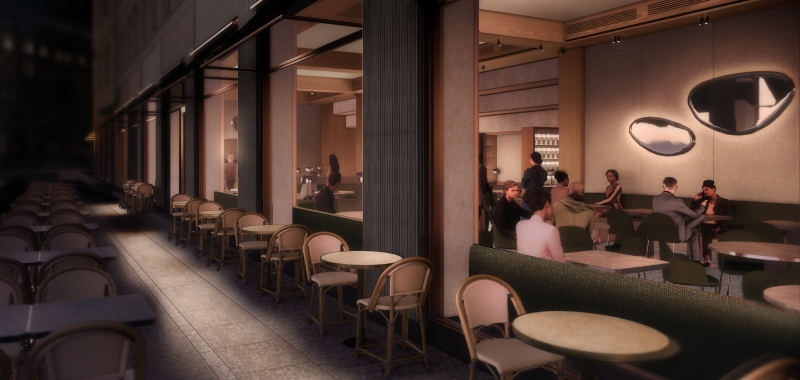
The new, hyped restaurant in Ny Østergade 24 will be called Levi, named after the mythical Italian grappa producer, Romano Levi.
It says Levi on the great windows on the beautiful white building, which is prominently featured on the busy corner of Ny Østergade and Store Regnegade. Levi is going to be the name of the new restaurant, which will open in the heart of Copenhagen in March this year. Behind the new restaurant is a team of experienced restauranteurs – Peter Trauboth, Jesper Boelskifte, Erik Gemal Witting and Mikkel Glahn, who have a long shared history in Copenhagen Concepts, which is the company behind Bistro Sommelier and MASH, among others. The Danish top designer, Johannes Torpe, has designed the restaurant and is also a partner.
The name is a tribute to the legendary Italian grappa producer, Romano Levi, who according to Jesper Boelskifte encapsulates everything they want the new restaurant to be.
”Grappa is the end of a good meal in Italy – it’s almost a religion. And there’s one producer, who in the past 50 years have stood out among the rest – Romano Levi. He’s known as the best of all time and his history and approach are very inspiring,” says Jesper Boelskifte, who has had the name in mind for the past 30 years.
He himself was training as a sommelier in Italy when he was young, and it’s always been a dream to create a place, which oozes of love for Italian food and of course, wine.
”It has to be a complete experience, where there is life at the bar and an informal vibe – just like in Italy. Now we have the right location, the right team and a shared dream of creating something completely new in Copenhagen,” says Jesper Boelskifte.
Striving for the same goal as Levi
Jesper Boelskifte heard about Romano Levi for the first time when he was 16 years old. A good friend’s dad was passionate about food and wine, and introduced the young boys to the artistic grappa Master. Besides making the best grappa in Italy, Romano Levi was known for hand drawing the labels on every single bottle. Each bottle was unique, and today they’re valuable collector’s objects.
”Romano Levi managed to create his very own universe, where both the product and the packaging was completely unique. That’s what we’re striving for with Levi. We want to create something pure and personal – a restaurant and a kitchen, which isn’t hiding behind anything,” says Jesper Boelskifte, who, along with Peter Trauboth, will be waiting on the guests himself – to put their own personal touch on the service.
Wild women are running over the fields in Ny Østergade
Romano Levi died in 2008, so there will be no more handmade drawings from the master himself, who was known for drawing his “wild women”. Instead, the people behind Levi have teamed up with a Danish artist, who will contribute to the artistic universe with inspiration from Romano Levi’s style and expression.
”He was known for his wild women, who ran over the fields and vineyards. We want to create a universe in his style, and pay tribute to his genius and live by some of the same virtues like purity, craft and thoroughness,” says Jesper Boelskifte.
Levi is expected to open in March on Ny Østergade 24, and you can stay in the loop on Instagram with @restaurantlevi.
About Romano Levi
Romano Levi grew up in a grappa family, who for 150 years had distilled the iconic Italian brandy. His father died young, and the company was taken over by Romano Levi and his sister. The siblings took over a distillery like many others of the time. But Romano Levi had a puristic approach and distilled in cobber kettles by traditional methods. He was also one of the first to approach the very best wine producers and got their grape marc, which is the foundation of grappa. He was quickly renowned as one of the best, and managed to make his own mark on the bottles.
Romano Levi loved art – he made each bottle unique. The labels were unique – he drew on each one himself. Just a handmade drawing on a piece of newspaper. He was best known for drawing women – namely the wild women running over the fields and vineyards. This became his calling card, and the bottles became collector’s items – especially after his death in 2008.

